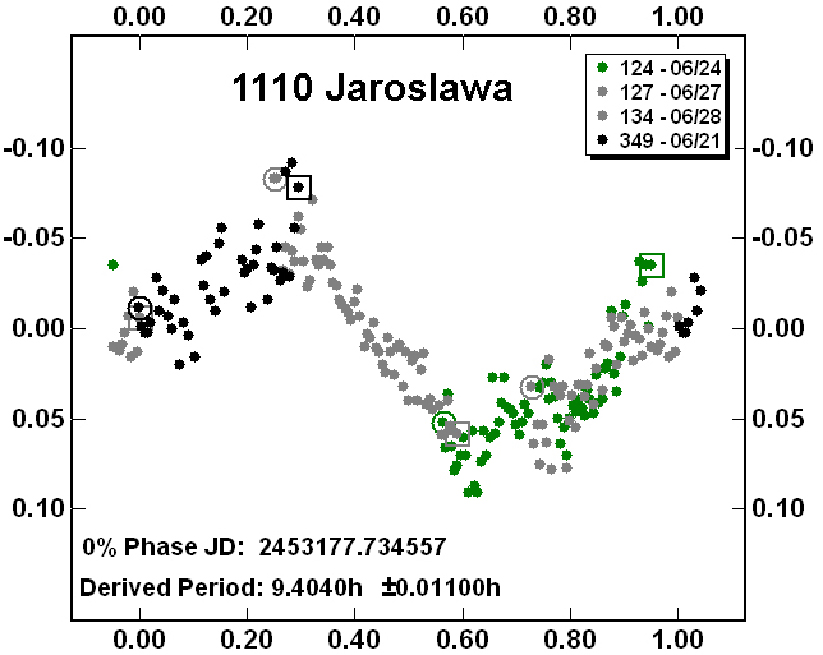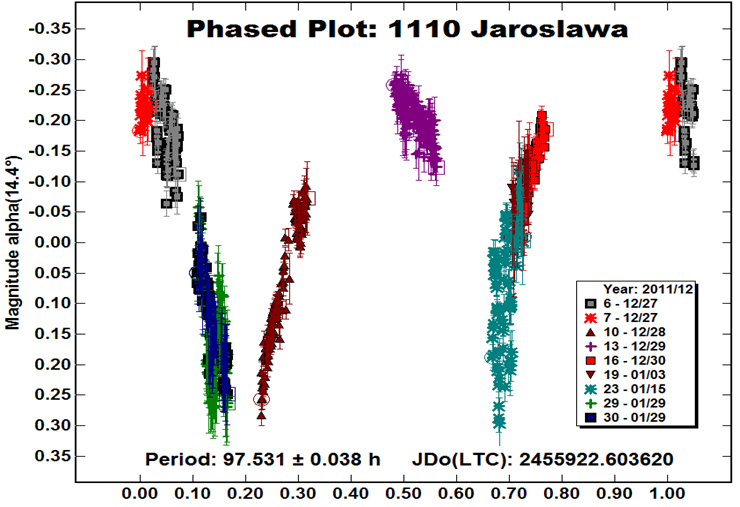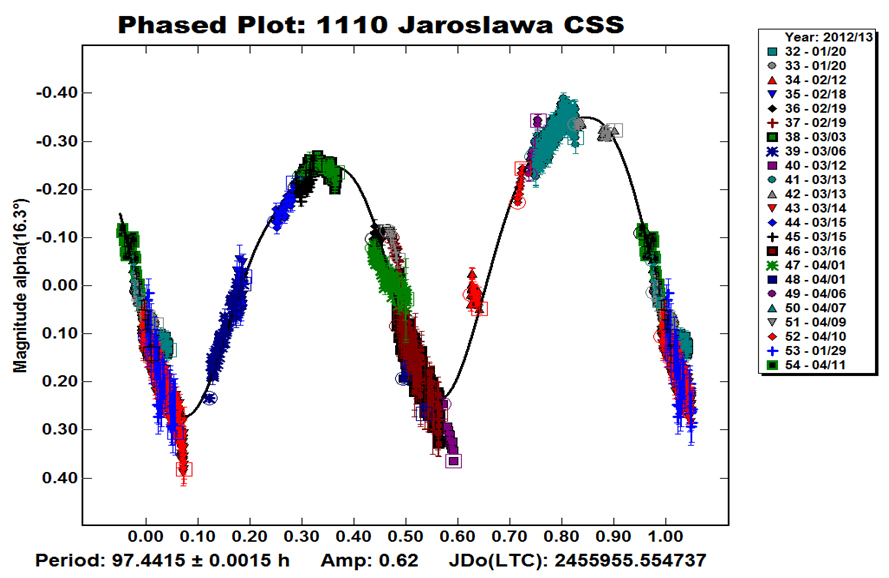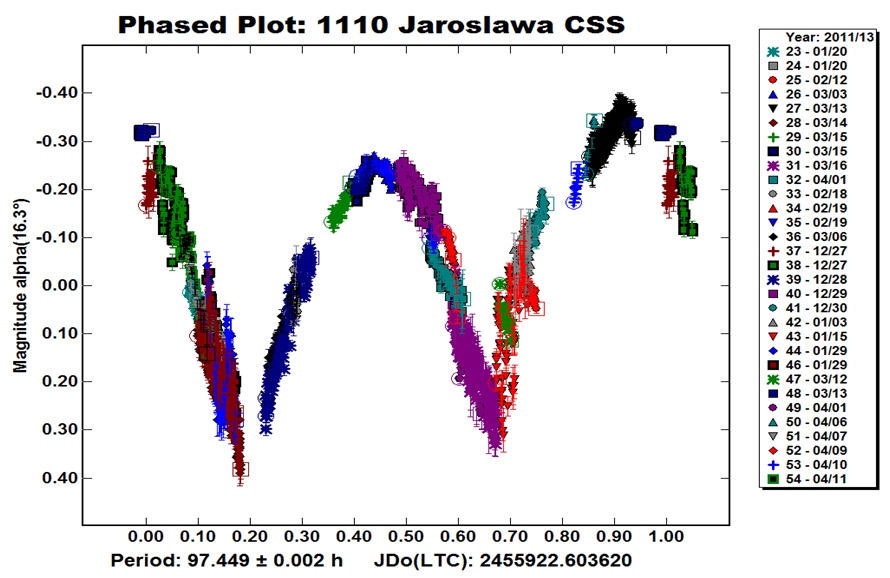
2004 lightcurve results for 1110 Jaroslawa. Derived period 9.4 ± 0.1 hours. Amplitude of 0.2 ± 0.03 magnitude.
1110 Jaroslawa is a main belt asteroid with an estimated diameter of about 65 km. It was discovered by Grigory Nikolaevich Neujmin on August 10, 1928 at Simeis. The semi-major axis is 2.22 AU, the eccentricity is 0.242 and the inclination is a 5.85 degrees.
This asteroid was first observed on four nights during June 2004. The results could be fitted into a single-peak period of 9.408 hours. Attempts to fit the data to a double peak period were inconclusive since considerable sections of the lightcurve were missed since a period of around 18 hours was such a simple fraction of a day.

I next observed the asteroid on seven nights between December 2011 and January 2012. Analysis of these results compltely ruled out the earlier result. Instead the data indicated a period of around 97.5 hours. This was almost exactly 4 days which resulted in much the same portions of the lightcurve being recorded each time. This meant that an international collaboration would be required to obtain the full lightcurve.

The next opposition of 1110 Jaroslawa was in early 2013. Shortly before this I put out a request for other observers to join in a collaboration to observe the full lightcurve. Two observers, Julian Oey and Frederick Pilcher agreed to contribute. In adition I had a student, Kevin Ryan, join the project. Although weather and equipment problems curtailed the observations, a total of 23 nights of observations were obtained between January 20 and April 11. Analsis of this data confirmed the results from 2011, with the derived period being 97.44 hours with an amplitude of about 0.65 magnitude.

Unfortunately, as can be seen in the above graph, the full lightcurve was not observed. However, by combining the data from 2011 and 2013, a very good coverage of the lightcurve is obtained. While not as good as covering the entire lightcurve at a single opposition, it does give a reasonable idea of the lightcurve.
